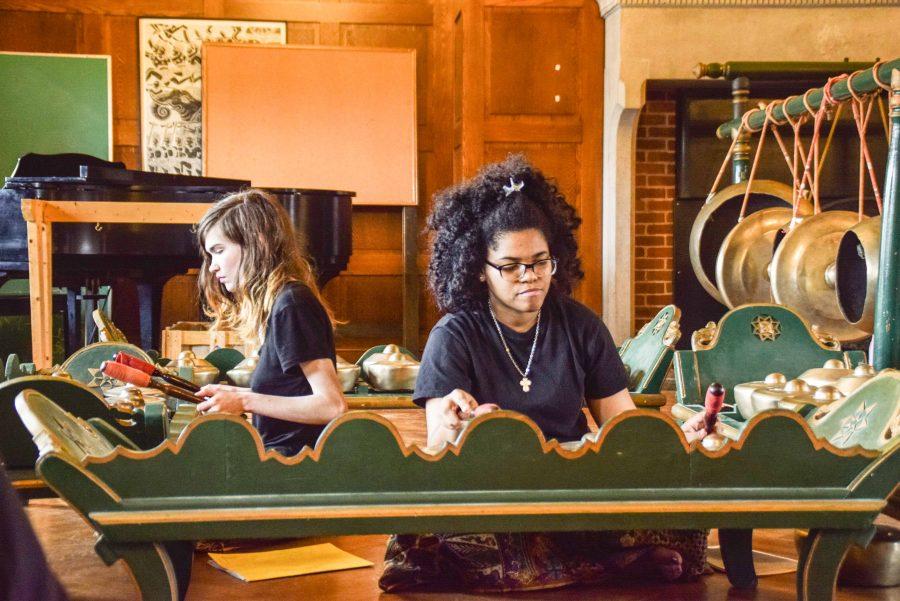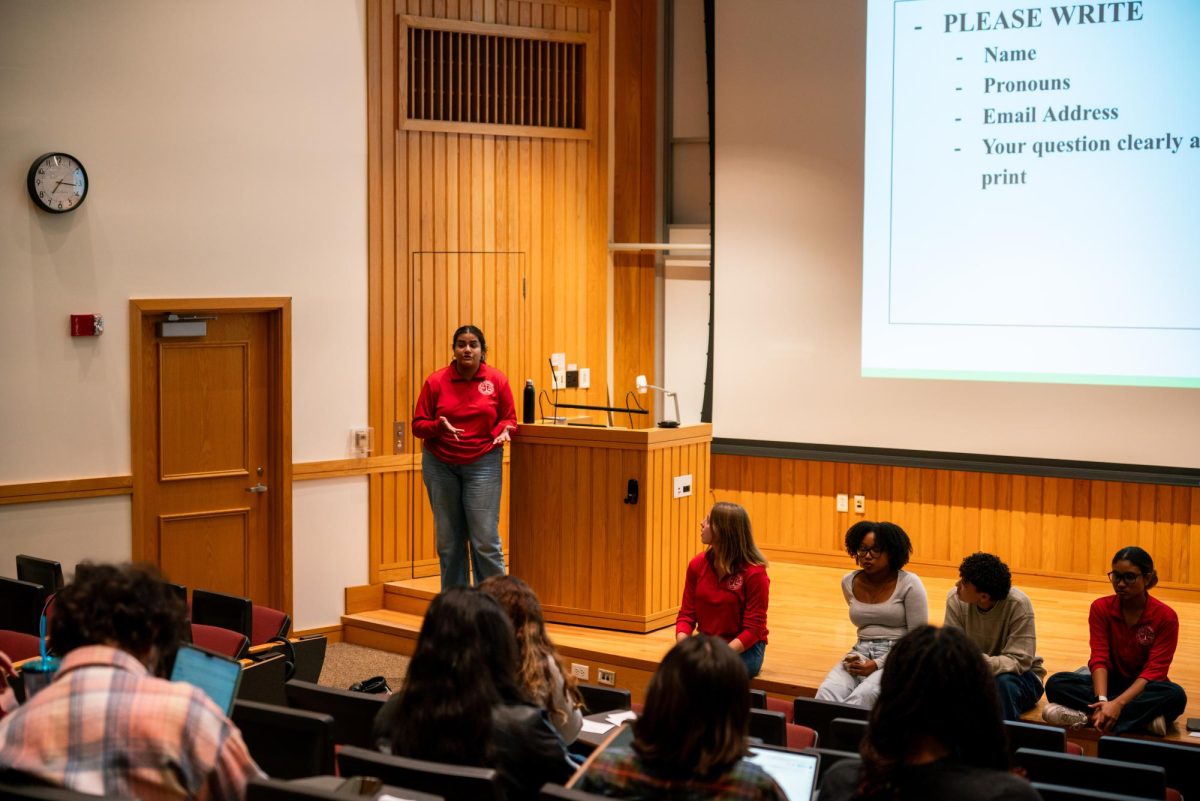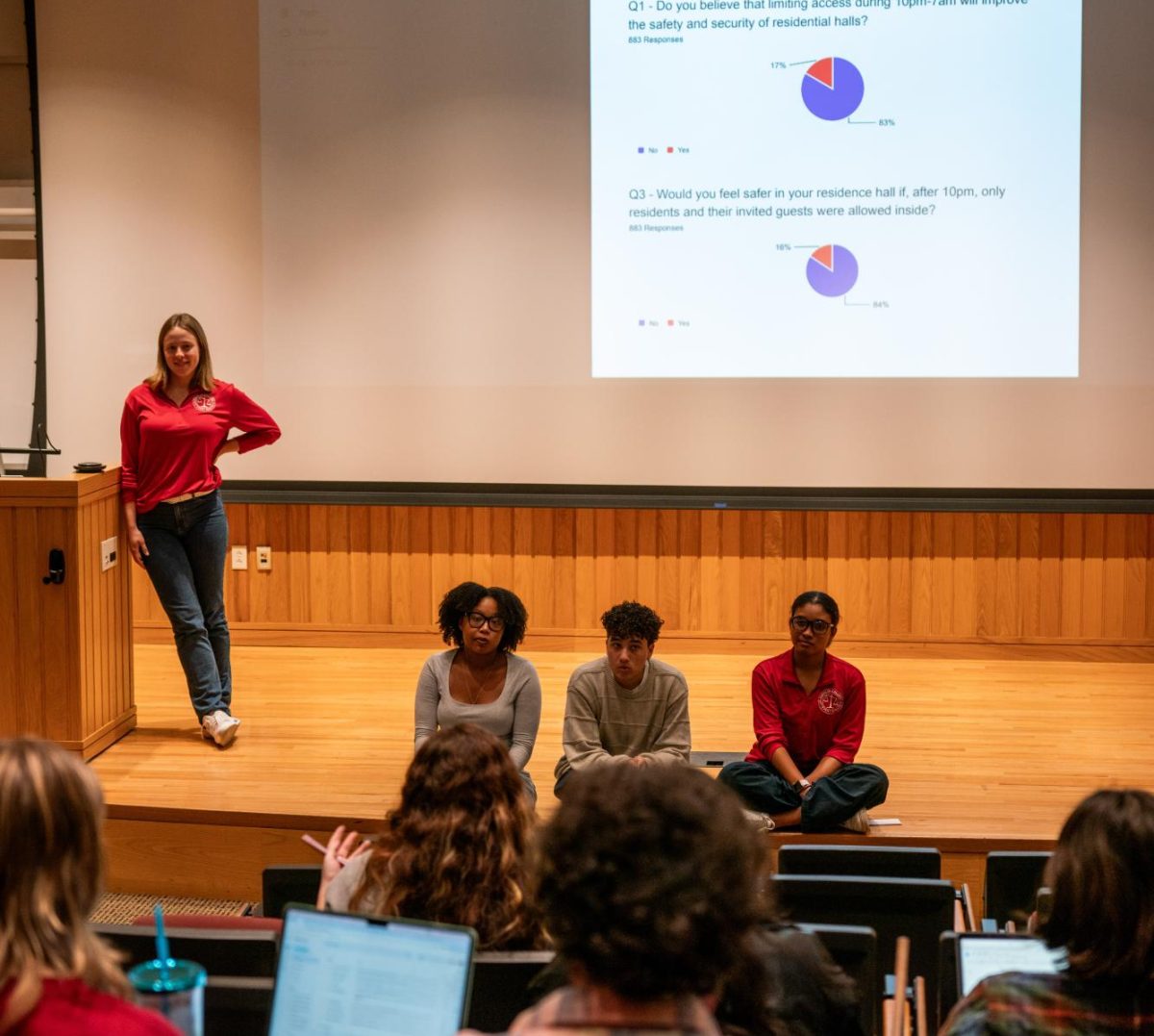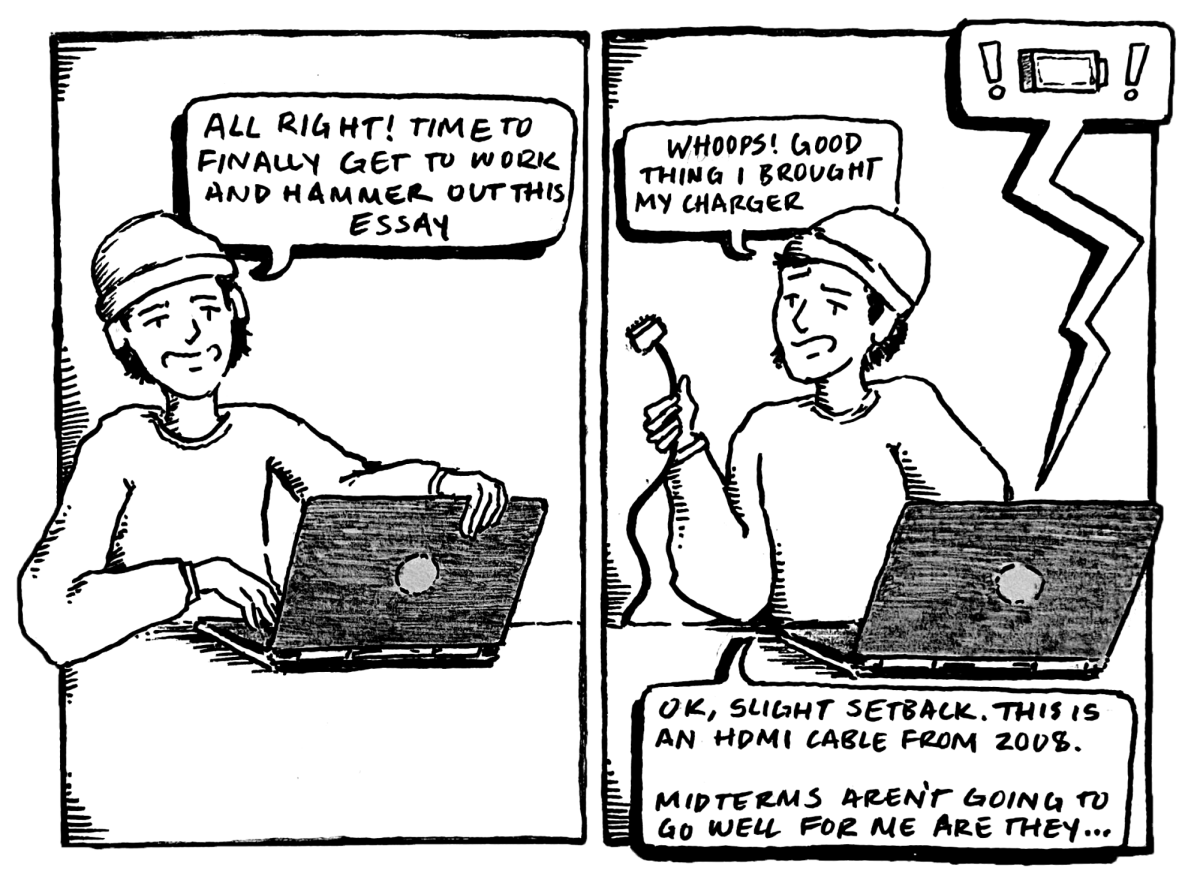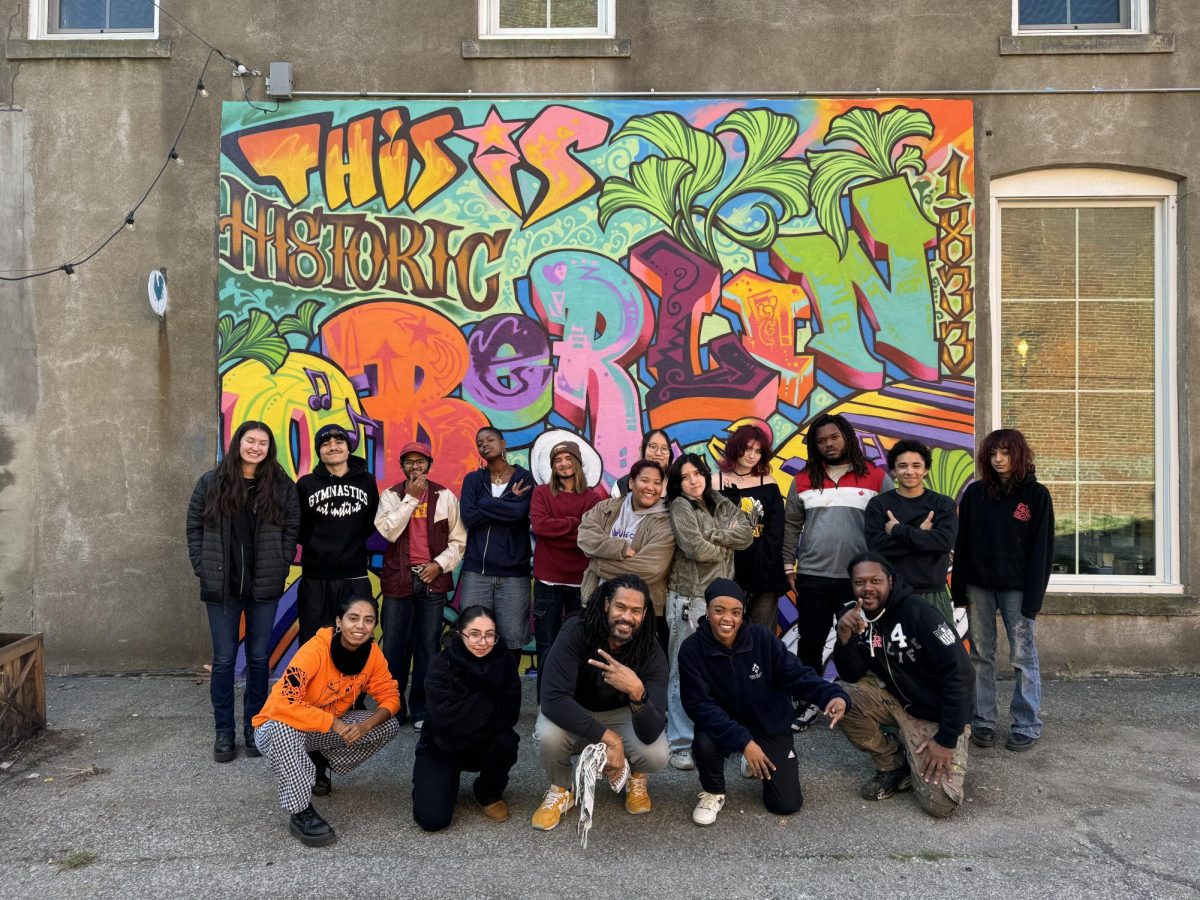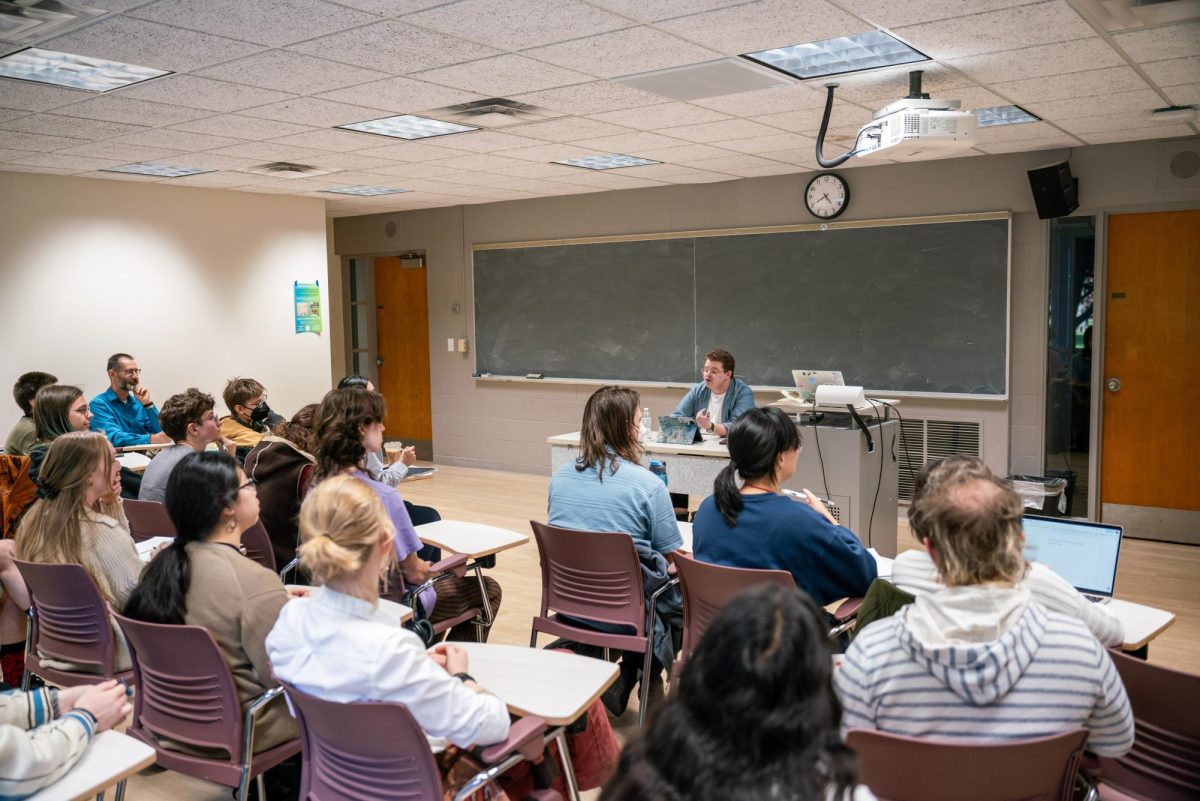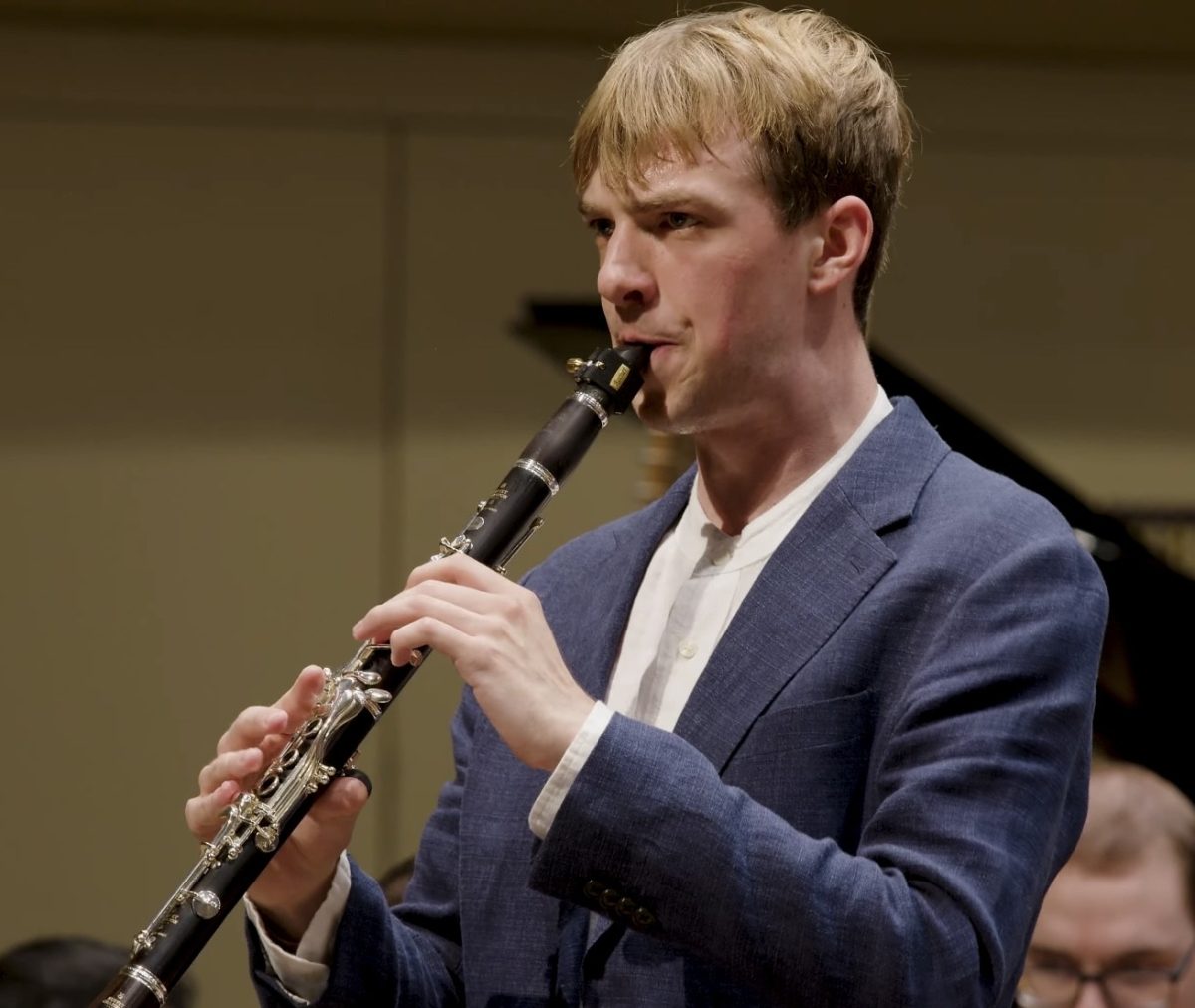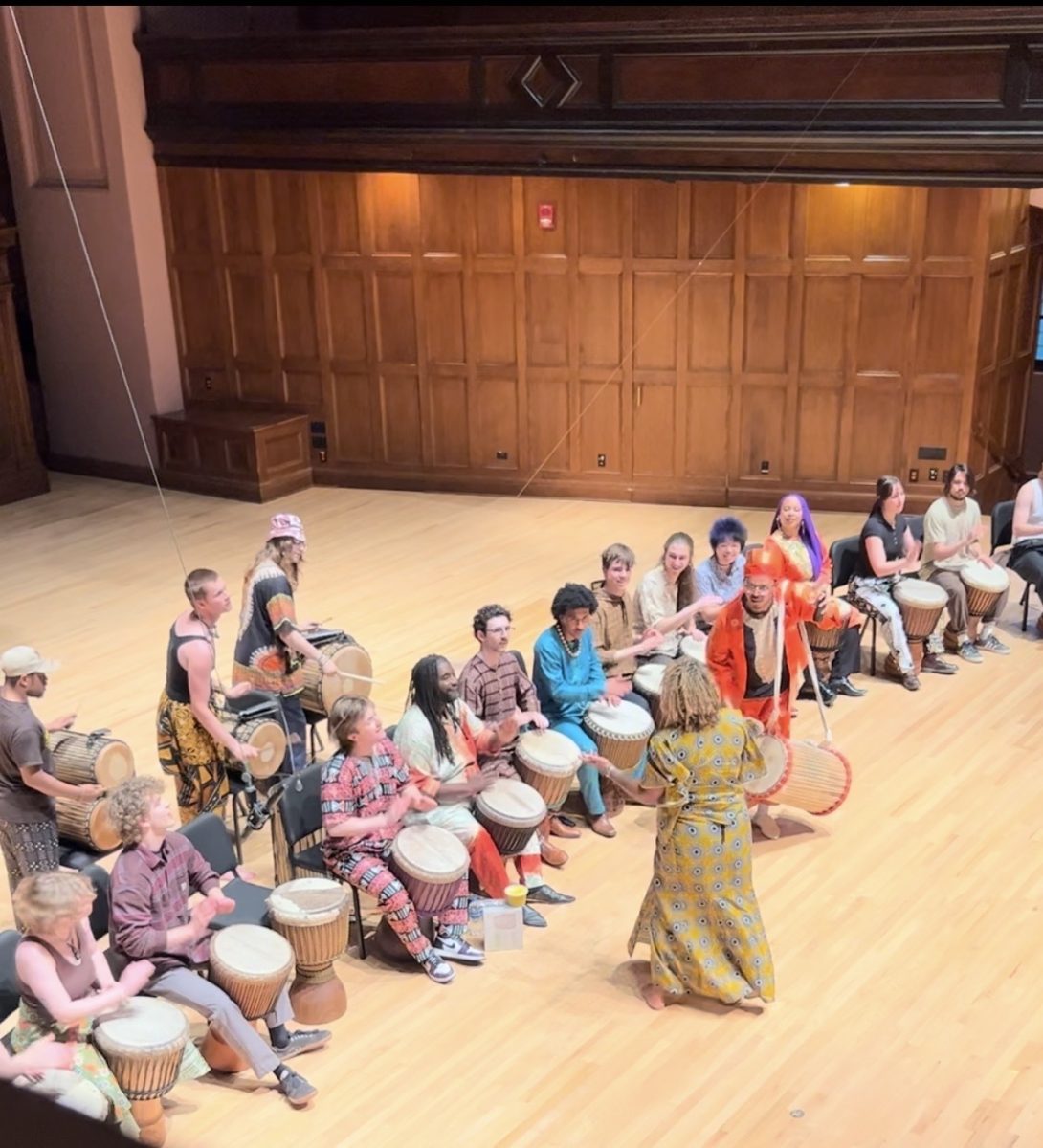Students Play Bonang, Rebab Pieces in Gong Concert
Senior Emma Pfeiffer plays the bonang panerus while first-year Morgan Thomas plays the bonang during the End- of-Semester Indonesian Gong Ensemble Concert at Asia House’s Shipherd Lounge on Sunday. The concert also featured a talempong ensemble, which performed rhythmic and festive songs.
May 6, 2016
Associate Professor of Ethnomusicology and Anthropology Jennifer Fraser introduced listeners to a blanket of unique sounds at Sunday’s End-of-Semester Indonesian Gong Ensemble Concert in Asia House’s Shipherd Lounge. The audience was treated to the only concert in the country where gamelan and talempong style music could be heard together. A student gamelan ensemble, which plays traditional music from Java, opened the performance. At first glance, passers-by might have mistaken the group for an elaborate Rube Goldberg machine, and in some ways it was. Each player acted as a section of a multi-part contraption, playing an integral role in creating the finished piece. The core of the ensemble was composed of percussion instruments including a variety of gongs, mallet instruments aesthetically similar to a marimba or xylophone (though aurally distinct), drums and a series of bell-like instruments known as bonang.
In the first piece, “Tropongan,” the melodies of the mallet instruments and the countermelodies of the bonang played close to one another. After several cycles of the melody, though, the nuances of the instrument parts came through. The repetitive nature of the music allowed one to appreciate every facet of the piece before the thumping pulse of the drum increased the tempo to indicate the beginning of a new repeated section. Like a conductor in a traditional orchestra, the central drum emphatically altered the tempo at crucial points to ensure the piece remained engaging. “Tropongan” was surprisingly short in light of the peaceful and carefree atmosphere it established.
What followed was easily the most intricate and lengthy piece, “Pangkur,” at well over nine minutes. It featured impressive coordination. A pair of performers played the piece’s main melody on two separate sets of bonang with accompaniment. The shrill drones of the rebab — a bowed string instrument — and the piercing melodies of the suling — a bamboo ring flute — complemented the firm sounds of the bonang players. At times, however, the rebab was barely audible, despite the fact that it was mere feet from the audience. This stilted the flow of the music.
Happily, the size of the audience increased as the program transitioned to talempong pieces. Talempong, the traditional music of West Sumatra in Indonesia, requires similar types of instruments as a gamelan ensemble, but far fewer performers. The five musicians in the group played a medley of short pieces from different villages in the province of West Sumatra. These pieces were more rhythmic and festive than the gamelan pieces, though the core repetitive structure and its effect remained intact. The smaller group’s sound seemed more organic, as none of the music was written down.
Between pieces, Fraser shared humorous anecdotes to lighten the already casual mood. The setting was very relaxed, characteristic of performances in Indonesia in which audience members often talk to each other and move about the room while the music is played. A student familiar with talempong, having played it during a 2014 Winter Term trip to Sumatra, unexpectedly passed by and was swiftly summoned from his seat in the audience to play. His work with the botol — a soda bottle played by striking its side with a fork — was one of the highlights of the concert.
To conclude the event, the large gamelan ensemble rematerialized to perform Ki Nartosabdho’s “Pujiku.” Unlike the folk music that dominated the concert, “Pujiku” combines the traditional gamelan music of Indonesia with Nartosabdho’s interpretation of popular music. The result was enthralling. Vocalists superimposed a contemporary melody atop the ensemble. The group was balanced; both the melody and lyrics were clearly audible and complemented each other’s tone despite different styles.
Sunday’s gamelan and talempong concert was a worthwhile experience. The compelling music featured at the event was unique and created a one-of-a-kind atmosphere that deserves attention upon the ensemble’s return next year.


